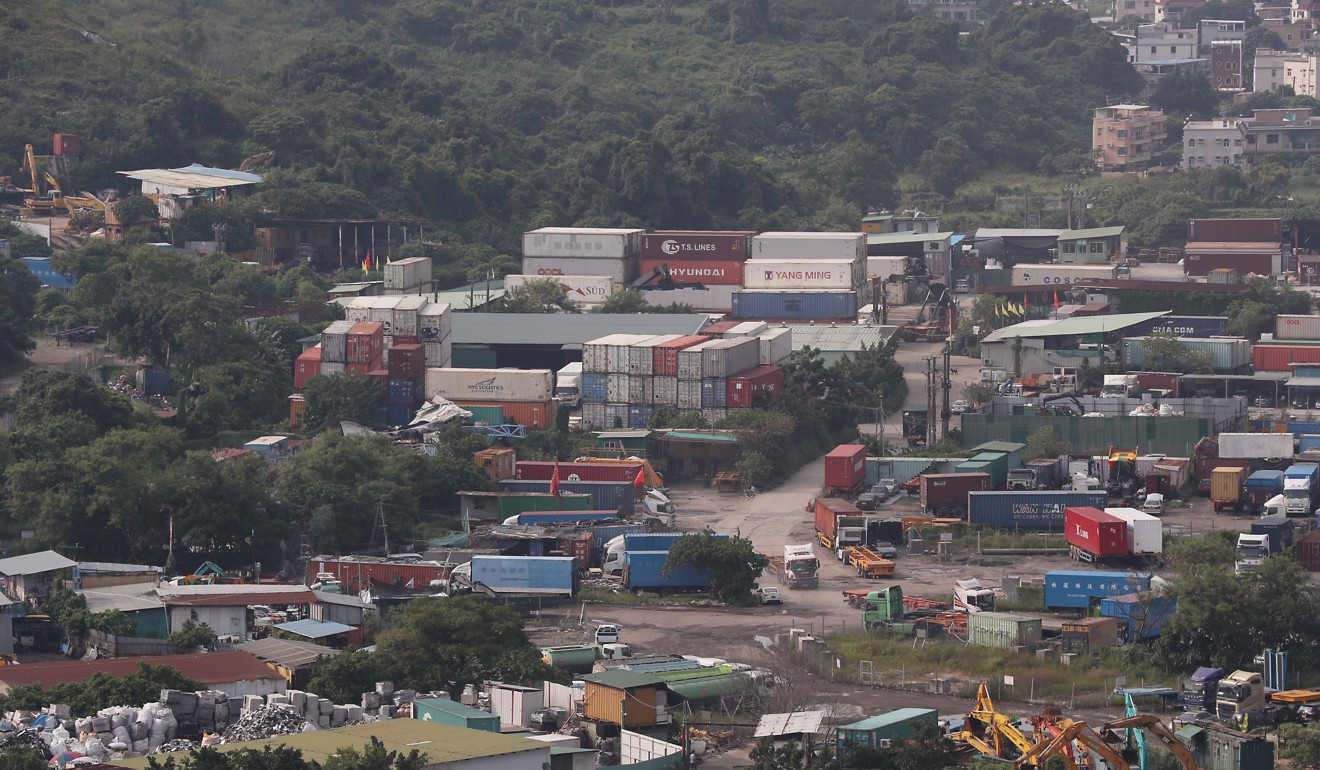
Developing 1,300 hectares of Hong Kong brownfield sites a challenge, panel warns
Task force on land supply finds more than 90 per cent of areas house businesses offering ‘significant economic contribution’
Almost all 1,300 hectares of Hong Kong’s brownfield sites are occupied by business operators, a government panel has warned, posing challenges for land development in the space-starved city.
The Task Force on Land Supply on Tuesday said more than 90 per cent of brownfield sites – damaged agricultural land mostly located in the New Territories – housed businesses that offered a “significant economic contribution”. It was the panel’s second meeting since it was established in September.
As open-air storage facilities, warehouses and car parks, the businesses served as a backbone for the logistics industry, task force chairman Stanley Wong Yuen-fai said.

“These brownfield sites are not idle land … The major challenge [in developing brownfield sites] is that there are multiple operators employing people, working on a day-to-day basis, that make economic contributions,” Wong said.
Citing recent information from consultants, the task force identified about 540 hectares of larger brownfield sites with higher development potential. They are concentrated in four areas: northern Fanling and northern Kwu Tung; Hung Shui Kiu; southern Yuen Long; and northern New Territories.
These brownfield sites are not idle land
Wong cited Hung Shui Kiu, which is being developed into a new town, as an example. He said 65 out of 190 hectares of brownfield sites there would have to be reserved for business operators.
Some of the 300 operators, which employ around 900 workers, would be rehoused in multi-storey buildings, while the rest could be relocated on plots of open land.
This would leave about two-thirds of the land for other development, he added.
Wong said the remaining 760 hectares of brownfield sites loosely scattered in the New Territories also had development potential, but their land use efficiency might not be as high as that of the large clusters.
The public has long called for the government to prioritise brownfield site development for housing.
Why a fight is raging over a proposal to build homes in Hong Kong’s country parks
The government commissioned a study on the feasibility of developing brownfield sites into housing. It is expected to be ready by the middle of next year.
Meanwhile, the task force said it expected to launch a public consultation from March to July next year to discuss the pros and cons of different land supply options. It also planned to have ready a report outlining an overall land supply development strategy by the end of November next year.

